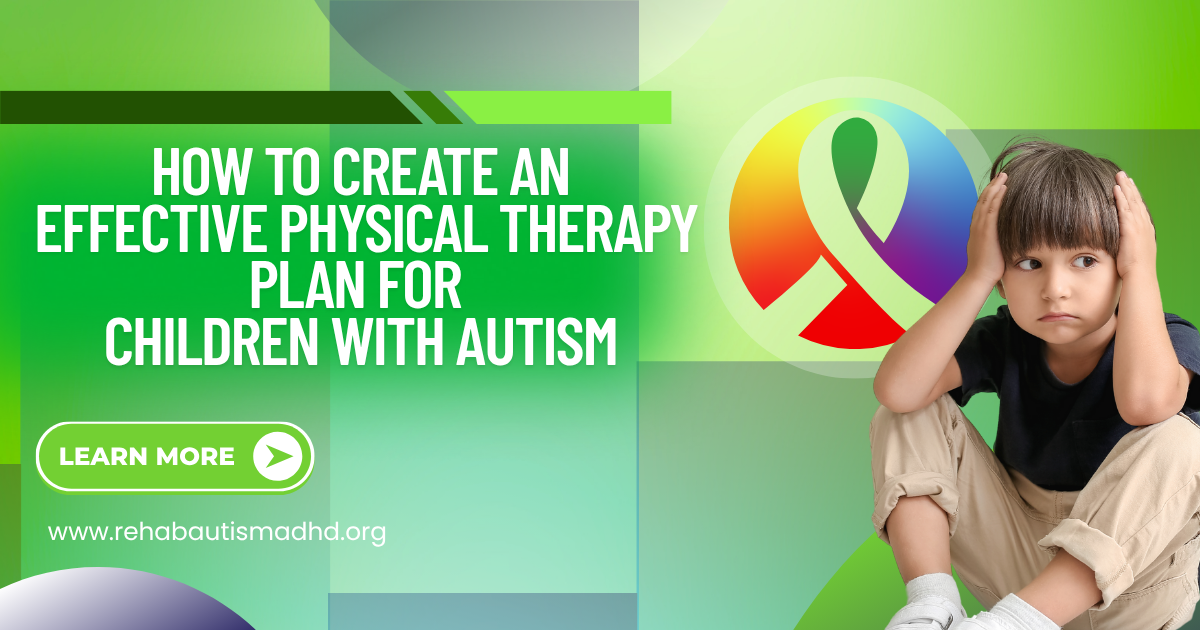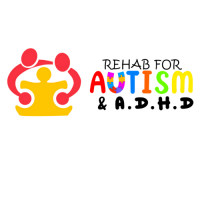How to Create an Effective Physical Therapy Plan for Children with Autism

Strong 8k brings an ultra-HD IPTV experience to your living room and your pocket.
Many children with autism face physical challenges every day. A good physical therapy plan helps them move better and feel more confident. Each child needs a special plan that fits their unique needs and abilities.
Why Children with Autism Need Physical Therapy
Autism affects how kids learn to move and use their bodies. Simple things like jumping, running, or catching a ball can be hard for them. Their brains process movement differently than other children.
Studies show that 79% of children with autism have trouble with motor skills. This means they struggle with activities at school and home. They might find it hard to button their shirts or tie their shoes.
Some children with autism do repetitive movements called "stimming." These movements help them feel calm. However, these behaviors can sometimes make it harder to learn new physical skills.
Physical therapy helps children overcome these challenges. Therapists use fun activities and games to teach better movement skills. Children learn while having fun, which makes therapy more effective.
Starting with a Good Assessment
Every child needs a complete check-up before starting therapy. Therapists watch how the child moves, balances, and plays. They look for strengths and areas that need improvement.
The assessment includes big movements like walking and jumping. It also covers small movements like picking up toys or using crayons. Therapists note if the child dislikes certain touches or sounds.
After the assessment, therapists set clear goals for the child. Goals might include standing on one foot for 30 seconds or walking up stairs alone. Having clear goals helps everyone see progress.
These goals must be realistic and achievable. Small wins build confidence and motivation. Children feel proud when they reach their goals, which encourages them to keep trying.
Using Sensory Activities
Many children with autism have trouble processing what they feel, see, or hear. Some kids want lots of sensory input, while others avoid it. Therapy plans must consider these sensory needs.
Sensory activities help children's brains work better. Swinging, bouncing on balls, or walking on different textures can help. These activities calm the nervous system and improve movement skills.
A child who seeks sensory input might enjoy pushing heavy objects or jumping on trampolines. A child who avoids sensory input needs gentler activities first. Therapists gradually introduce new sensations.
For example, a child might start by touching smooth surfaces. Over time, they learn to tolerate rougher textures. This gradual approach helps children feel safe while learning.
Building Strength and Coordination
Children with autism often have weak muscles, especially in their core. This makes them tire easily and affects their posture. Strength exercises help them feel stronger and move better.
Core exercises might include sitting on therapy balls or playing balance games. Leg exercises could involve riding bikes or climbing playground equipment. These activities build muscle strength naturally.
Coordination exercises teach children to use both sides of their body together. Crawling through tunnels, playing catch, or dancing helps develop this skill. Better coordination makes daily activities easier.
Therapists make exercises fun by turning them into games. Children might pretend to be animals while doing exercises. This playful approach keeps kids engaged and motivated.
Creating Routine and Structure
Children with autism feel safer when they know what to expect. Therapy sessions should follow the same pattern each time. This might include warm-up, main activities, and cool-down time.
Visual schedules work great for these children. Picture cards show each activity in order. Kids can move cards to a "done" pile as they finish each task. This gives them control and shows progress.
Keeping the same time, place, and activities helps reduce anxiety. When children feel safe, they can focus on learning new skills. Predictability is key to successful therapy.
Some children need extra time to adjust to changes. Therapists go slowly and give plenty of warning before switching activities. This patience helps children feel comfortable.
Involving Families at Home
Good therapy doesn't stop at the clinic. Families play a huge role in helping children practice at home. Therapists teach parents simple activities they can do together.
Home activities might include walking to the mailbox, playing at the park, or doing exercises with household items. Walking on tape lines improves balance. Playing with balloons helps hand-eye coordination.
Parents learn to understand their child's signals. They recognize when their child feels overwhelmed and needs a break. They also learn how to encourage their child safely.
Simple home programs work best. Parents need clear, easy instructions they can follow. Too many complicated exercises can overwhelm busy families.
What Research Shows Us
Recent studies prove that individualized physical therapy really works. Children who get personalized plans improve 40% more than those in generic programs. This shows how important it is to tailor therapy to each child.
One study followed 150 children with autism for six months. Those in structured therapy programs got much better at balance, coordination, and strength. They also did better in daily activities and felt more confident.
Another study from the University of California found that combining physical therapy with sensory activities works best. Children improved not just in movement but also in attention and social skills.
These research findings help therapists choose the best methods. Evidence-based therapy gives children the greatest chance of success. Parents can feel confident in proven approaches.
Tracking Progress Over Time
Therapists check progress regularly to see what's working. They might use tests, watch videos of the child moving, or ask parents about home activities. This helps them adjust the plan as needed.
Progress often happens in small steps, not big jumps. A child might go from needing full help to needing just a gentle touch for balance. These small improvements are actually big victories.
Therapists write down changes in strength, balance, and coordination. They also note if the child pays attention better or tries new activities. These improvements in attitude matter just as much as physical changes.
Monthly check-ups help keep therapy on track. If something isn't working, therapists can try new approaches. Flexibility is important for long-term success.
Real Success Stories
Sarah was a 7-year-old who struggled with balance and coordination. Her therapy focused on core strength and sensory activities. After six months, she could ride a bike with training wheels and play with friends at recess.
Michael was 5 years old and avoided most physical activities because they felt uncomfortable. His therapist slowly introduced new textures and movements through play. Within four months, he enjoyed swinging, climbing, and running games.
These stories show how the right therapy can change a child's life. The key is understanding what each child needs. With patience and the right approach, every child can improve.
Success looks different for every child. Some might learn to ride bikes, others might improve at playground games. All progress is valuable and worth celebrating.
Working with Other Therapists
Physical therapy works best when combined with other treatments. Many children also need speech therapy in Patna to help them communicate during physical activities. Good communication helps therapists understand the child's needs.
Occupational therapy in Patna often works alongside physical therapy. Occupational therapists help with fine motor skills and daily tasks. Together, these therapies provide complete support for the child.
Working with the best autism doctor in Patna ensures all treatments work together. Doctors provide important information about medications or health issues that might affect therapy. Team work gives children the best results.
When all professionals communicate well, children benefit more. Each therapist can share what they learn about the child. This helps everyone provide better care.
Solving Common Problems
Some children resist new activities or don't like the therapy room. Therapists stay patient and creative. They might start with activities the child already enjoys, then slowly add new challenges.
Children with autism often have strong preferences for certain toys or activities. Smart therapists use these preferences in therapy. A child who loves spinning might work on balance through controlled spinning games.
Behavior problems sometimes happen during therapy. Therapists learn what triggers these problems and how to prevent them. They might dim lights, reduce noise, or give sensory breaks when needed.
Building trust takes time. Therapists go at the child's pace and never force activities. When children feel safe and understood, they become more willing to try new things.
Using Technology in Therapy
Modern therapy often includes technology that children find exciting. Interactive games, virtual reality, and motion sensors can make therapy more fun. Tech-savvy kids often respond well to these tools.
Wearable devices can track how the child moves and show progress over time. Some children enjoy seeing their improvements on screens. This visual feedback motivates them to keep working hard.
Apps and digital tools help families continue therapy at home. Parents can watch exercise videos, track daily activities, and stay in touch with therapists. Technology bridges the gap between clinic and home.
However, technology should support, not replace, human connection. The relationship between therapist and child remains the most important part of successful therapy.
Planning for Long-Term Success
Good physical therapy plans think about the future. As children grow and change, their needs change too. Therapists adjust goals and activities to match the child's development.
Some skills take months or years to develop fully. Therapists help families understand this timeline. Patience and consistency lead to better results than rushing through therapy.
Preparing for transitions is important. As children move from elementary to middle school, their physical needs change. Therapy plans should prepare them for new challenges.
The goal is to help children become as independent as possible. Skills learned in therapy should transfer to real-life situations at home, school, and in the community.
Conclusion
Creating a good physical therapy plan for children with autism takes careful thought and planning. Each child needs an individualized approach that considers their unique strengths and challenges. Success comes from understanding sensory needs, setting realistic goals, and working as a team.
The journey includes ups and downs, but every child can make progress. With patience, creativity, and proven methods, physical therapy opens doors to better movement and greater confidence. Children learn skills that help them participate more fully in life.
Rehab For Autism creates special physical therapy plans just for children with autism. Our caring team understands each child's unique needs and challenges. We use fun, proven activities to help children get stronger and more confident. Call Rehab For Autism today to see how our therapy programs can help your child grow and succeed.
Ready to Help Your Child Succeed?
📞 Call Us Today: +91 9304140878
💬 Send Us a Message: [email protected]
🏥 Visit Us: C17, SK Puri, Patna 800001
⏰ We’re Open: Monday-Saturday, 12:00 PM to 8:00 PM
Your child’s journey to success starts with one phone call. We’re here to help every step of the way.
Note: IndiBlogHub features both user-submitted and editorial content. We do not verify third-party contributions. Read our Disclaimer and Privacy Policyfor details.


